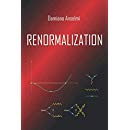Archive for January 2001
A flow invariant is a quantity depending only on the UV and IR conformal fixed points and not on the flow connecting them. Typically, its value is related to the central charges a and c. In classically-conformal field theories, scale invariance is broken by quantum effects and the flow invariant $a_{UV}-a_{IR}$ is measured by the area of the graph of the beta function between the fixed points. There exists a theoretical explanation of this fact. On the other hand, when scale invariance is broken at the classical level, it is empirically known that the flow invariant equals $c_{UV}-c_{IR}$ in massive free-field theories, but a theoretical argument explaining why it is so is still missing. A number of related open questions are answered here. A general formula of the flow invariant is found, which holds also when the stress tensor has improvement terms. The conditions under which the flow invariant equals $c_{UV}-c_{IR}$ are identified. Several non-unitary theories are used as a laboratory, but the conclusions are general and an application to the Standard Model is addressed. The analysis of the results suggests some new minimum principles, which might point towards a better understanding of quantum field theory.
Class.Quant.Grav. 18 (2001) 4417-4442 | DOI: 10.1088/0264-9381/18/21/304

 Quantum Gravity
Quantum Gravity 


